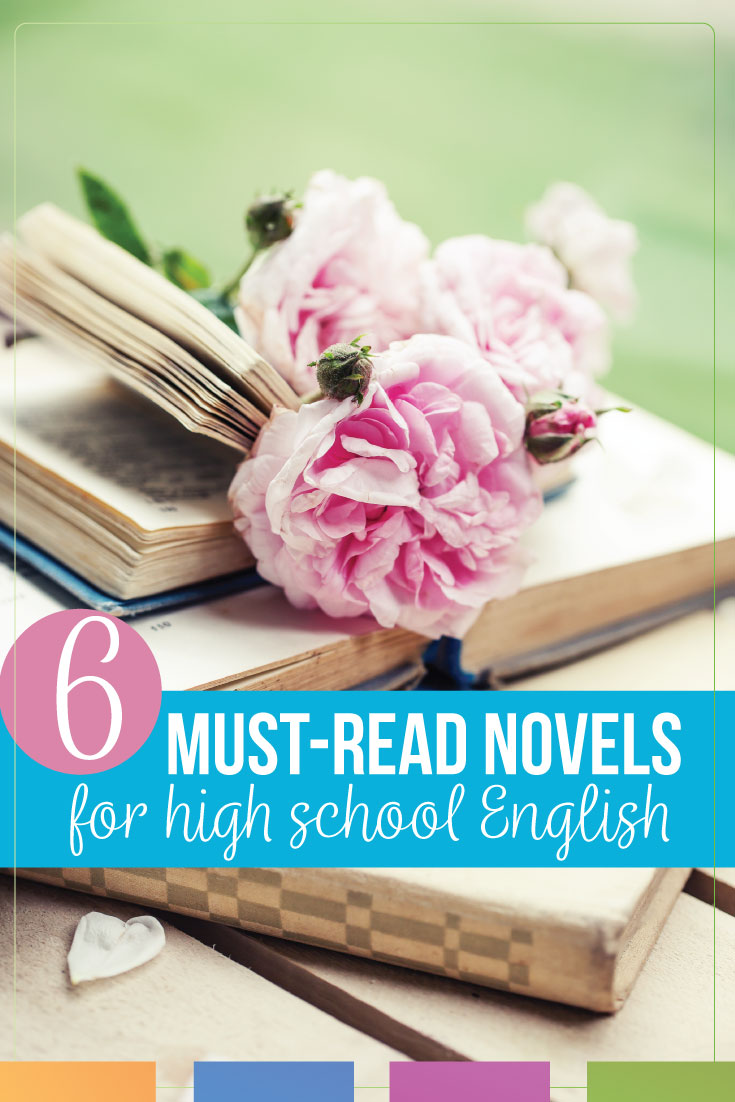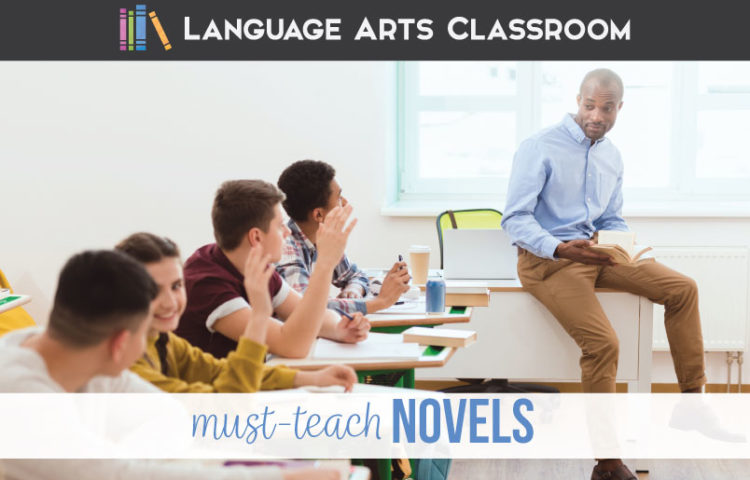Must-teach novels are here! March is National Reading Month, and today, my friend and I are covering ideas for ELA books.
I’ve teamed up with Melissa from Reading and Writing Haven to bring you 6 Must-Teach Novels for Secondary ELA. As English teachers, we love to read and share our passion for literature.
How can English teachers decide?
As an English teacher, people often ask my my “favorite.” I can’t really narrow down my favorites. How would I do that? I can narrow down genres maybe, or most impactful books. Often, I take a stab at narrowing the impact in my life:
- Favorite play? A Raisin in the Sun
- Favorite Shakespeare play? Macbeth
- Book that changed the way I look at the world? The Grapes of Wrath
- Book that forever changed the way I look at America? Native Son
- Book that made me reconsider politics? Slaughterhouse Five
- Book that helped me as a teacher? Trauma and Recovery
- Favorite memoir? The Color of Water
- Most impactful memoir? Incidents in the Life of a Slave Girl
I think you understand. As someone with a degree in English and self-proclaimed book nerd, I can find a column for most of my favorite stories. Narrowing them down is really impossible. Still, Melissa asked me to write this blog post, so I thought of books that made me cry, made my students cry. Books that students mentioned when they returned from college.
First, I consider that I should not necessarily teach my favorites, but rather, I should teach novels to meet standards and to engage my high schoolers. Second, I do continue to look at what books resonate with me and to stay current of literature so I can present the best material to my students.
The six novels I’ve chosen are intertwined with my teaching career, as I’ve grown personally from them and grown professionally from them. They lend themselves to various and engaging activities. Night, I Know Why the Caged Bird Sings, Animal Farm, A Separate Peace, Their Eyes Were Watching God, and The Fault In Our Stars are my must-teach novels for secondary ELA. Here are ideas for these secondary ELA books.

Night
Overview: Elie Wiesel survived unspeakable events as a Jew during the Holocaust at Auschwitz that he courageously spoke in Night.
Why I personally like it: I cry at several points in this story—every time that I read it. (I’ve probably read it fifty times.) The direct message and non-fluff syntax haunts me. The courage Wiesel shows in sharing this story also amazes me.
Best teaching moment: Seeing the impact of Wiesel’s straightforward message on my students. Years later, students return and comment on parts that still resonate with them.
I find teaching Night a personal responsibility: that the Holocaust happened and that we as humans have a responsibility to guard against it ever happening again is a profound lesson.
Night is about a hundred pages, and as Oprah once said, should be “required reading for all of humanity.”
Informational text pairing: I use Common Lit for nonfiction about the Holocaust.
I Know Why the Caged Bird Sings
Overview: Maya Angelou write about her childhood in memorable language. (My students share their favorite quotes, unprompted.)
Why I personally like it: I read this book as an undergraduate, and I had never read such crisp language. The story is straight-forward. I can remember how I felt reading it, twenty years later.
Best teaching moment: Students love that Maya Angelou was the first female African-American streetcar conductor in San Francisco. I feel like students think that spunk embodied her.
Informational text pairing: Students find her poem at President Clinton’s inauguration interesting, and I often ask them to look into other poets who have read at inaugurations.
- I am aware that this book is not technically a novel, but I wanted to include it on the list. High school students love this book.

Animal Farm
Overview: Animals throw out their tyrannical leader (the farmer) and overtake the farm. They set up a new government. A new dictator emerges. Surprise! George Orwell was talking about the Russian Revolution the entire time.
Why I personally like it: I don’t share Orwell’s completely dark outlook on governments, but I do believe that history can repeat itself.
Best teaching moment: This sounds cruel, but when the events surrounding Boxer come to a close (ahem), students are furious! Everyone loves Boxer!
To see that anger with students—walking into class and slamming down books—thrills my English-teacher soul.
Informational text pairing: Students often struggle to understand the brainwashing and question the portrayal of the animals’ adherence to new rules. We talk about brainwashing in America, and students are shocked.
A Separate Peace
Overview: Two teenage boys deal with a world war and the struggles of friendship. A lack of communication and the increasing presence of war change their lives.
Why I personally like it: The last paragraph of the book may be the most poignant paragraph I’ve ever read.
Best teaching moment: Finishing the book and asking students to turn back to chapter one. We reread the section from the adult narrator, and students see the beauty of a book truly connected.
Part of teaching literature is showing students why they can love it. This happens when I teach A Separate Peace by John Knowles. The parts that overlap (the world war, the war brewing within Gene) and the beautifully woven imagery (the worn marble stairs, the infamous tree) show students that within a novel, every line matters.
Plus, some students are passionate that (spoiler!) Finny did not need to die for the book to make sense. Students realize they can have opinions about the liberties an author takes, and that is a huge step in their analysis of literature.
Informational text pairing: You can connect PTSD to this novel. Sometimes I ask students to complete a web search, and they each read an article of their choosing. Students are alarmed to learn that PTSD occurs in others aside from veterans.
Their Eyes Were Watching God
Overview: Janie Crawford grows up and lives life in the Jim Crow South.
Why I personally like it: I root for Janie like I have never cheered for a character before. When she lets her hair down. . . I am excited for her every time I read this.
Best teaching moment: Students are shocked at how Janie’s husbands treat her. We have amazing discussions about females and expectations and the time period.
Informational text pairing: Hurston’s life is fascinating, and students find her interesting. We often study the time period in which she lived.
The Fault In Our Stars
Overview: Two teenagers with cancer fall in love.
Why I personally like it: I enjoy this novel, but it is not my favorite book personally. I do enjoy teaching it, however, because my students love it so much.
Best teaching moment: Students are sad at the end. They relate to the characters and have opinions about the parents We have rich discussions. Basically, when I teach this book, I have success.
Informational text pairing: Oftentimes, my students are familiar with Anne Frank. When the characters visit her attic, we build on prior knowledge and review that topic.
It’s important as secondary ELA teachers that we remember why we became passionate about literature. In reminiscing about must-teach novels for this post, I became excited again, excited to share the fun and exploration with my students.
As it is National Reading Month, what better time is there?! I’d love for you to join us; comment below as to your must-teach novels for secondary ELA, and then pop over to read Melissa’s must-teach novels for secondary ELA.



